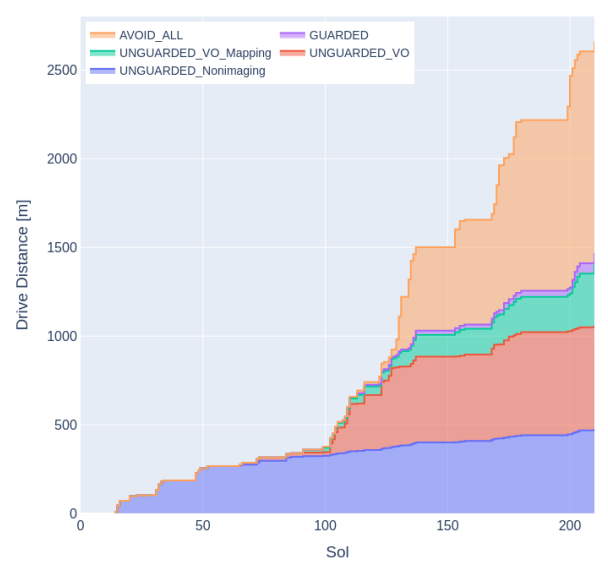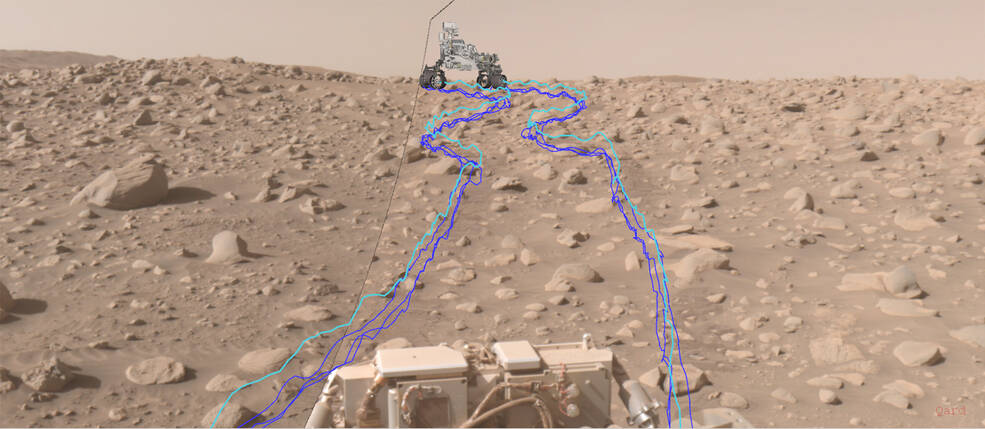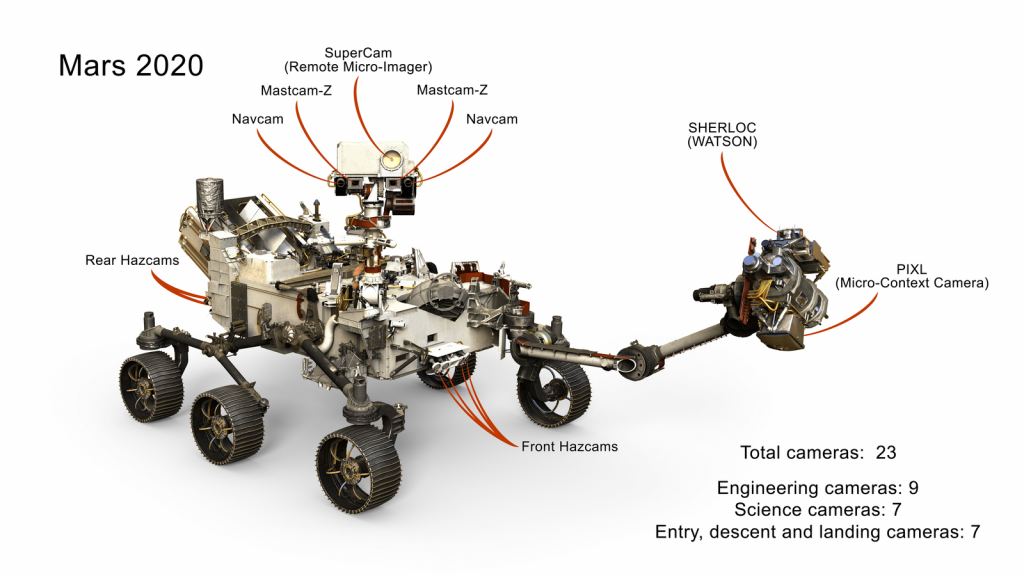NASA’s Perseverance Rover is Setting Records on Mars
By Evan Gough
NASA’s Perseverance Rover has been exploring Mars for more than 900 sols. It’s the most scientifically advanced rover ever built and has opened our eyes wider to Mars and the possibility that it hosted life. The rover’s crowning achievement is preparing samples for eventual return to Earth, an important next step in understanding Mars.
But it can’t do any of its work without moving effectively and efficiently on the Martian surface. And in this regard, Perseverance and its autopilot are setting some serious records.
Perseverance’s computerized pilot is called AutoNav. It works in conjunction with an entire team of human operators. They plan a navigation route based on interesting geological sites and sample collection, and AutoNav finds its way while avoiding obstacles.
Planning the route is a detailed activity based on satellite images of the rover’s region of operation, the floor of Jezero Crater. Once operators choose the destination, it’s up to AutoNav to find the best route between obstacles, including boulders and steep, unstable slopes. And AutoNav is proving it’s up to the task.
AutoNav is an upgraded version of the system that Perseverance’s predecessor MSL Curiosity uses.
“We sped up AutoNav by four or five times,” said Michael McHenry, the mobility domain lead and part of JPL’s team of rover planners. “We’re driving a lot farther in a lot less time than Curiosity demonstrated.” Curiosity planned autonomous routes of up to 100 meters or so, while Perseverance’s updated system allows for autonomous routes much longer.
Perseverance set the record for a single-day drive distance on Mars when it travelled 347.7 meters (1140.7 ft.) in a single sol. That’s longer than any other rover, although the comparison with MSL Curiosity might be a little unfair. Curiosity is climbing Mt.Sharp, while Perseverance’s longest day took place in a relatively flat and easy-to-traverse region in Jezero Crater. But head to head, Perseverance still travels farther.
It also set the record for the longest drive without human review. That was 699.9 m (2296.2 ft.) and also took place on the floor of Jezero Crater.
“Everybody on the team knows we only got to this level of performance by standing on the shoulders of giants. Sojourner, Spirit, Opportunity, and Curiosity were the trailblazers.”
Del Sesto, deputy rover planner lead for Perseverance at JPL.
Perseverance is the first Mars rover to drive the first 50% of its distance autonomously, a feat it accomplished early in its mission after 210 sols. The rover’s flexibility and multiple operating modes, especially AutoNav, helped the rover achieve this record. Its success continues.

This summer, Perseverance journeyed through a boulder field called “Snowdrift Peak.” The boulder-strewn region put AutoNav’s power on display.
“It was much denser than anything Perseverance has encountered before – just absolutely littered with these big rocks,” said Del Sesto, deputy rover planner lead for Perseverance at JPL in Southern California. “We didn’t want to go around it because it would have taken us weeks. More time driving means less time for science, so we just dove right in.”
The team planned a straight-line route through the obstacle field—including two stops to examine specific boulders—that was 520 m (1,706 ft.) long. After just over a month, including science stops, Perseverance exited the boulder field. It ended up travelling 759 m (2,490 ft.) and much of the additional distance was under AutoNav’s direction. As the rover travelled, it identified hazards it needed to avoid that weren’t visible in satellite images.

“If you take out the sols (Martian days) dedicated to mission science, the traverse through Snowdrift Peak only took six autonomous drive sols, which is probably 12 sols faster than Curiosity would have taken,” said Del Sesto. “Of course, everybody on the team knows we only got to this level of performance by standing on the shoulders of giants. Sojourner, Spirit, Opportunity, and Curiosity were the trailblazers.”
Perseverance has six cameras that help AutoNav find its way. It has two NavCams, and they’re mounted high on the rover’s mast like eyes, about 42 cm (16.5 in.) apart. It also has four HazCams or Hazard Avoidance Cameras. Four of them are on the front of the rover, and two are on the rear.

There’s a critical difference between Perseverance’s AutoNav and the autonomous systems of its predecessors. Perseverance’s system can process information as it drives. It can take new images and process them as it moves around on the surface, thanks to faster cameras and more powerful computers. In fact, Perseverance has two computers in its navigation system, and its extra one is totally dedicated to image processing.
“On past rovers, autonomy meant slowing down because data had to be processed on a single computer,” said Mark Maimone, deputy team chief for robotic operations on Perseverance. “This extra computer is insanely fast compared to what we had in the past, and having it dedicated for driving means you don’t have to share computing resources with over 100 other tasks.”
“Snowdrift Peak” is behind Perseverance now. But AutoNav will be further relied upon in the mission’s fourth and current science phase, which began on September 7th. The rover is headed for a region containing plentiful carbonates, which hold evidence about Mars’ environmental history, and maybe even preserved signs of ancient microbes.
But to examine this evidence, it faces more obstacles. There are sand dunes, high slopes, fractured bedrock, and even impact craters.
Can AutoNav handle the challenge?
“This new terrain is definitely going to throw a few curveballs at us and AutoNav,” said Maimone. “But that is where the science is. We’re ready.”
The post NASA’s Perseverance Rover is Setting Records on Mars appeared first on Universe Today.

September 22, 2023 at 01:42AM
via Universe Today read more...

Post a Comment